Weather in Australia

Australia is part of the southern hemisphere, so its seasons will be opposite to what you’re used to. When it’s winter in Europe and Latin America, it’s summer south of the equator.
There are four seasons across most of Australia, with the tropical north experiencing a wet and dry season. Summer runs from December to March (average temperature 29°C), autumn throughout March to May, winter runs from June to August (average 13°C) and spring from September to November.
See more Australian investment programs
CLIMATE ON THE AUSTRALIAN EAST COAST
Sydney, Melbourne and Brisbane
Australia’s most populated area (and the most frequented by tourists), the east coast, enjoys a pleasant climate. The ocean waters play a big part in the changing weather conditions.

It’s common for Melbourne to experience all four seasons in one day – one minute it can be sunny before it quickly turns to rain. Generally the city enjoys a temperate climate with warm to hot summers; mild, temperate springs and autumns; and cool winters. Temperatures average 25°C/77°F in summer and 14°C/57°F in winter. Rainfall is highest from May to October. It’s often warmer and dryer the further north you travel.
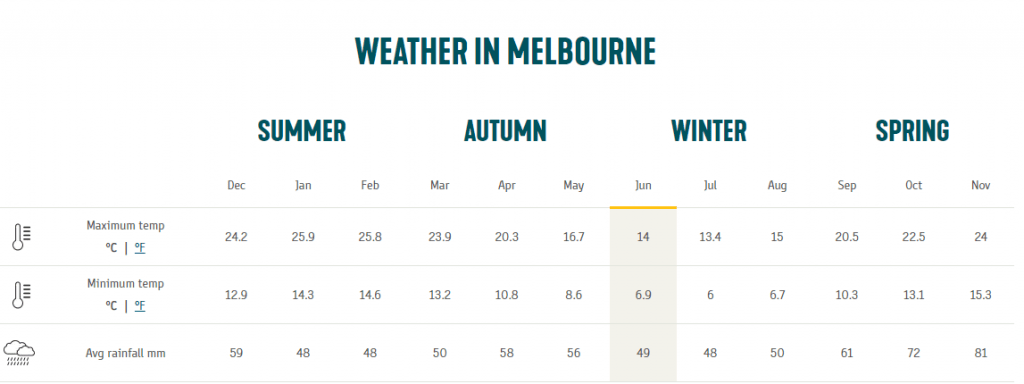
Sydney experiences warm but mild weather throughout the year. In summer (December-February), average maximum temperatures are around 26°C/79°F It can also be humid at this time with an average humidity of 65 per cent. Average maximum temperatures in the winter months (June-August) are around 16°C/61°F. Sydney’s rainfall is highest between March and June.
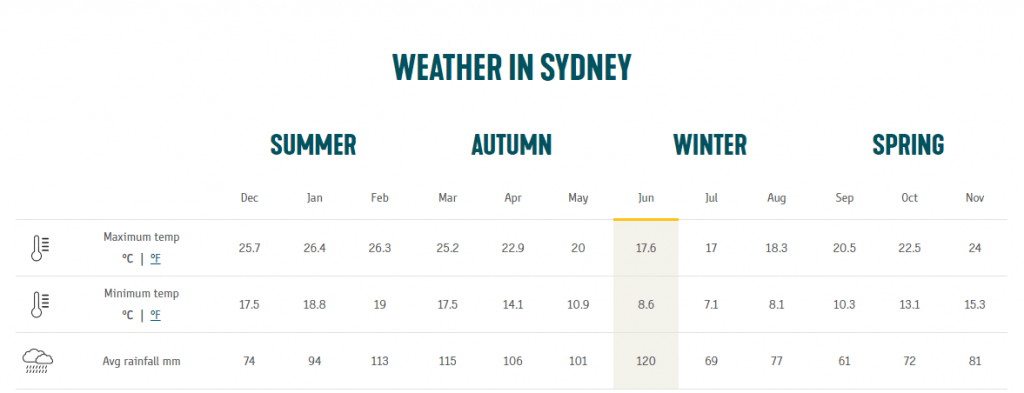
Brisbane has a subtropical climate with warm or hot weather for most of the year. In summer (December-February), maximum temperatures average around 30°C/86°F. The city experiences its highest rainfall in summer which sometimes brings thunderstorms and occasional floods. This is also the most humid time of the year in Brisbane. Winter time is generally dry and mild. Most winter days are sunny with average temperatures of around 17°C/63°F. The average monthly rainfall over the year is around 96 mm.
Summer is hot with warm nights. Winters, on the other hand, are rather cool and rainy, but they continue to offer many sunny days.

CLIMATE IN WESTERN AUSTRALIA
Perth
Perth experiences hot, dry summers and mild winters. It’s unusual for it to rain during summer but thunderstorms and rain are very common during the cooler months. Perth has more sunny days annually than any other Australian capital city. Rainfall is highest between May and September. February is usually the hottest month of the year, with temperatures averaging 31°C/88°F. A sea breeze called ‘The Fremantle Doctor’ provides some relief from the heat. Winters are relatively cool and wet with daytime temperatures ranging from 18-21°C/64-70°F.
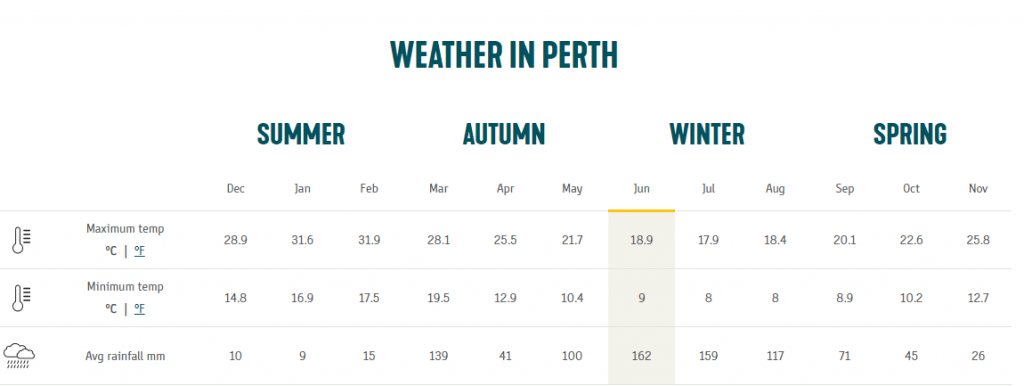
The south coast of Western Australia experiences cold fronts and winds that come from Antarctica.
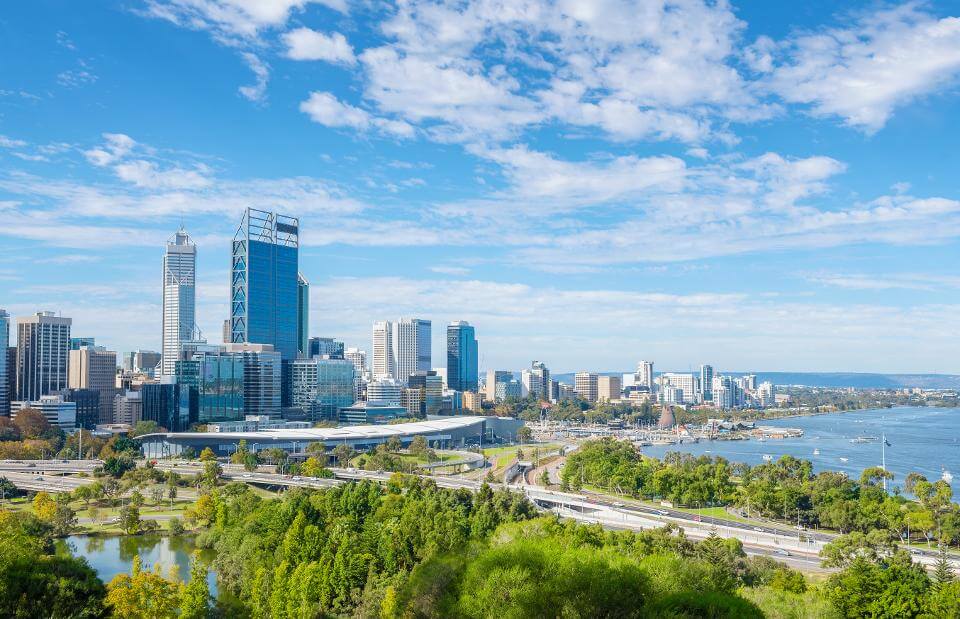
CLIMATE IN NORTHERN AUSTRALIA
Darwin and Cairns
Despite being so far away from each other, Darwin and Cairns experience similar weather throughout the year. The northern end of Australia experiences wet and dry seasons, unlike other parts of Australia.
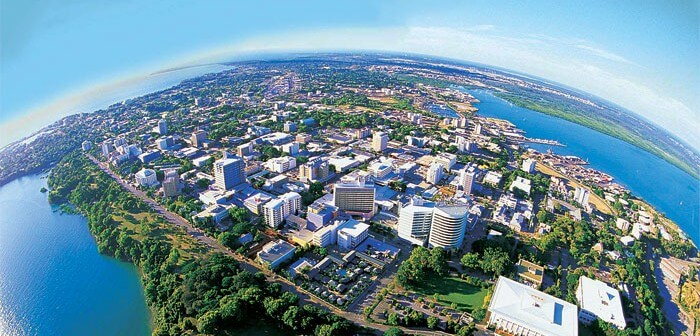
Darwin experiences the wet season from November to April where temperatures range from 25°C to 34°C. This season is characterised by high humidity, monsoonal rains and storms. The dry season occurs from May to October and is characterised by warm, dry sunny days with cooler nights. While the temperature doesn’t differ too much throughout the year, the humidity isn’t as high during the dry season.
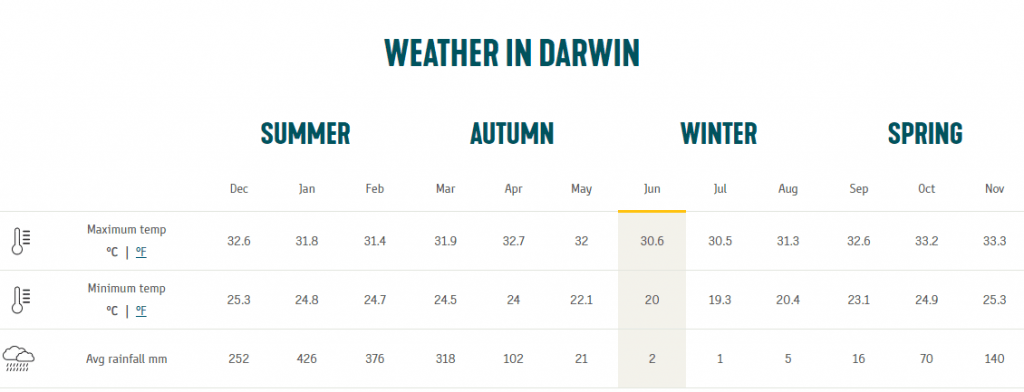
Cairns experiences heavy rainfall during the summer months when the weather is quite humid and hot. There are lower levels of rainfall during autumn/ winter, but the wind can be quite strong. The temperature during the “cooler” months is still fairly warm but mild and it isn’t as humid.
The average annual rainfall is around 1992 mm, mostly falling between January and March. The wet season begins building up around December, resulting in humid days and stormy nights. Typical daytime temperatures in Cairns are 23-31°C/73°F-88°F in mid-summer and 18 °C/64°F in mid-winter. Tropical cyclones sometimes occur from November through May.
CLIMATE IN THE AUSTRALIAN DESERT
The climate in the Australian desert – generally referred to as the outback on maps – is very hot and dry. During summer, the outback is very hot and humid – some days have seen temperatures as high as 50°C. Unknown to many, the outback can experience below freezing temperatures during the winter months.

In Australia’s desert, conditions can be unpredictable: it may not rain for years or torrential rain may cause flooding by filling areas to create salt lakes, such as Lake Eyre.
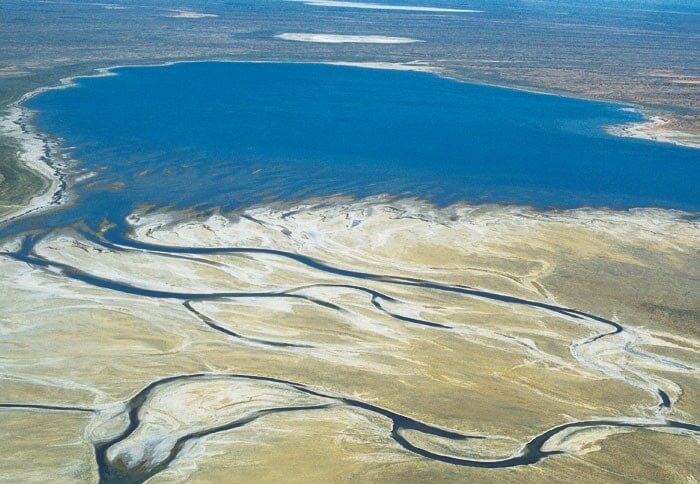
See more Frequently asked questions about Australia immigration







